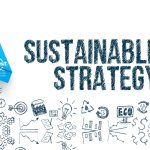How to Grow Sustainability in the Food Supply Chain
Quest’s CEO, Ray Hatch was recently featured on SupplyChainBrain.com with an article discussing the challenges and opportunities concerning sustainability in the food supply chain
Ray Hatch, CEO Quest Resource Management Group
From construction to automotive services, businesses are focusing on ways to become more eco-conscious. The food supply chain is no exception. Within the logistics and shipping communities, there’s been a significant push toward more sustainable practices over the past 10 years, and industry leaders are focusing on them heavily.
But why is sustainability so important? And what can you do to keep up?
Gaining Traction
One of the driving factors in the shift toward sustainable logistics is regulation. New laws affect everything from materials used to package goods to the vehicles used to transport them. As new rules are set, businesses across the board are being compelled to keep up with them.
Even more important than the regulatory requirements is pressure from the investing community and consumers in general. Consumer awareness levels are higher than they’ve ever been, and people are increasingly picky about how they spend their money. Investors understand this, and are therefore focusing on companies that appeal to those picky consumers.
Approximately 70 percent of S&P 500 companies publish sustainability reports. Sustainable business practices aren’t just a sign of eco-consciousness; they’re a sign of stability. Companies that waste less spend less, because sustainability and efficiency go hand-in-hand.
Sustainability in Practice
What does a sustainable supply chain look like? Let’s break down an example in food production.
The food supply chain has the added complication of dealing with time-sensitive materials. Food waste is a huge problem in the food production business, because almost all of it ends up in landfills. The goal is to match the right amount of raw materials with quantities of finished product, then fill a certain number of trucks with the most efficient delivery routes and newest forms of emissions reduction.
Easy enough, right? In reality, there are a lot of moving parts that make the perfect balance of production and delivery a challenge. Each one of those parts is responsible for its own piece of the puzzle as far as sustainability is concerned.
For example, the food manufacturer has to make sure it’s handling food waste correctly and under local and federal regulations. It must ensure the use of appropriate packaging and labels that prevent spoilage. Logistics companies have to make sure their fleets can handle perishables, by maintaining the refrigeration units on their trailers. They must also ensure that routing platforms are creating the fastest and most efficient routes. Vehicles have to meet emissions standards and be well-maintained to prevent breakdowns and the loss of an entire trailer’s worth of goods. And that’s just the production and delivery stages. It doesn’t account for waste created along the way. As daunting as all this may sound, in the end, the more sustainable each link of the supply chain, the more sustainable the entire chain will be.
Challenges Ahead
With every far-reaching concept comes a variety of challenges, and sustainability is no exception. Issues include the adoption of new technology suites for routing and logistics, and making the jump to emission-free vehicles. Such changes involve tremendous upfront costs.
Yet another challenge that companies face today is educating, training, and informing employees about sustainability directives. Employees need to understand the impact of sustainability projects on the company and supply chain as a whole. That way, they see the real impact, rather than assuming that a sustainability program is just a pet project from the C-suite.
Not all of the steps toward sustainability have to be big ones. You can start making changes right now without spending any money at all. By taking a realistic, unbiased look at the waste you’re currently generating, you can start to find ways to reduce it and divert it from landfills. Selecting vendors and other partners to help you move along a sustainable path can be a difficult process, but it’s one that enhances the entire supply chain from start to finish. Being a stronger link in that chain will set your company apart, and everyone wins in the end.
This article was originally posted on SupplyChainBrain.com









